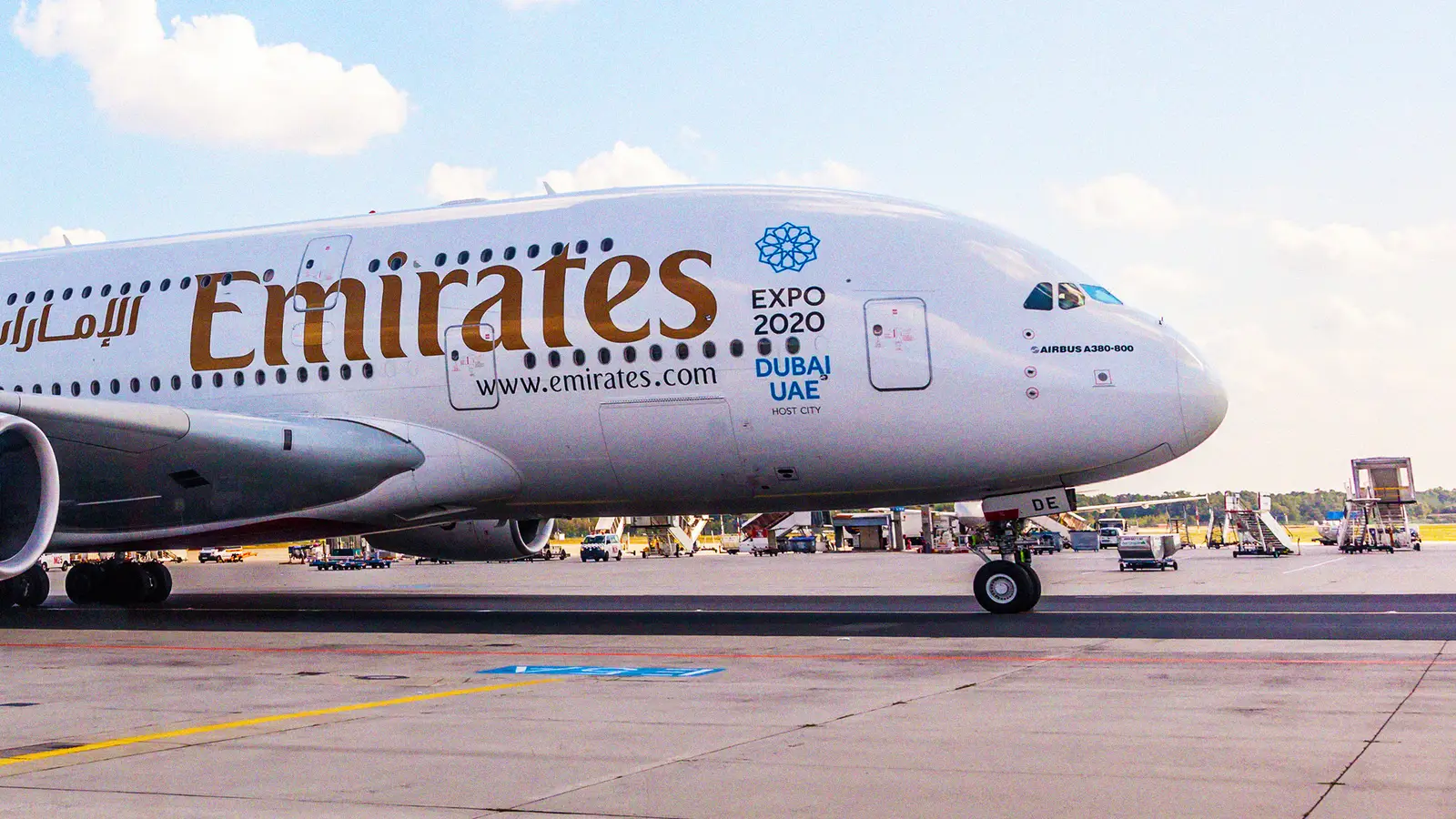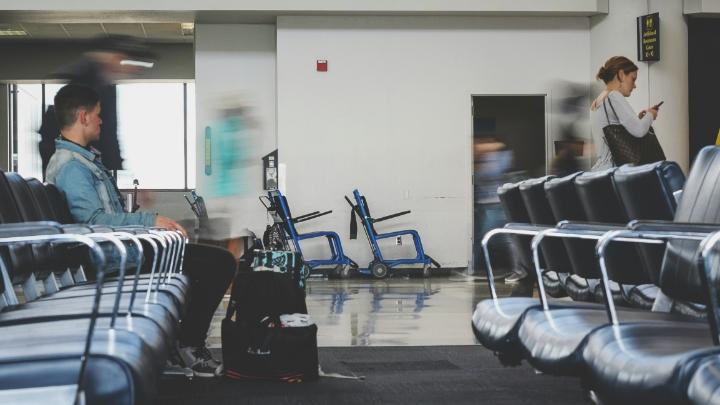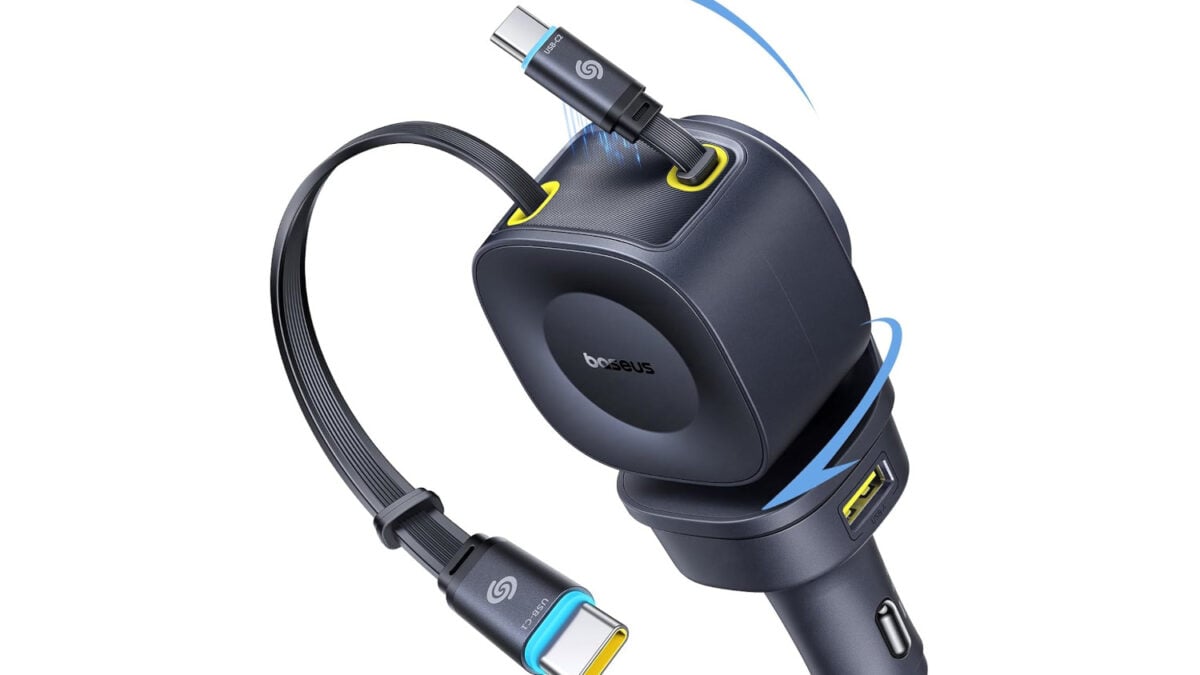
The Airbus A380 is the largest commercial airliner ever built and is still seen at some of the largest airports around the world. A clear hit with passengers, it fell out of favor with airlines during the pandemic. Although numbers have dropped, ten airlines still operate the aircraft to long-haul destinations. What went wrong with the Airbus A380?
The A380’s first commercial flight was on October 25, 2007, with Singapore Airlines, flying from Singapore Changi Airport (SIN) to Sydney Kingsford Smith Airport (SYD) in Australia. Tickets were auctioned off for charity, allowing passengers to fly on the iconic double-deck airliner for the first time. Emirates was the second customer for the A380, receiving its first aircraft on July 28, 2008. Its inaugural flight was from Dubai International Airport (DXB) to New York’s John F. Kennedy International Airport (JFK). Qantas was next to receive the aircraft in October 2008, and its first flight departed from Melbourne Airport (MEL) to Los Angeles International Airport (LAX).
Expensive To Operate And Commercially Impractical?
The problem with the A380 is that it is expensive for airlines to operate. The aircraft typically has three pilots and between 21 and 24 cabin crew. According to CNN, there are four mighty engines to fuel, and it also needs to be taken into account that few airports can accommodate an aircraft of this size. Major airports had to make significant investments to accommodate the aircraft. Airbus says that 140 airports worldwide are compatible with the aircraft, and 400 can accept it in case of an emergency landing.
The Airbus A380 was proving to be a logistical challenge, with airports having to upgrade their facilities to accommodate the massive aircraft. It was heavier, wider, and carried more passengers than the Boeing 747, the largest passenger aircraft at the time. Taxiways and parking stands had to support the weight of the aircraft. The height of the aircraft and its 262-foot wingspan had also to be taken into consideration. Airports had to buy new jet bridges that could reach the upper deck to board and deplane passengers. New catering trucks had to be sought that could deliver to the galleys on the upper deck. It was a serious investment for airports.
In short, the Airbus A380 has to be at full capacity to operate and make commercial sense. During the pandemic, most of the world’s A380 fleet was grounded as it was not practical to fly them when not full, and air travel for most people had stopped. Some airlines decided to retire the A380, as it was just not profitable. Of 251 Airbus A380s, 22 were scrapped for parts, including those from Malaysia Airlines, Air France, and Singapore Airlines.
Why The Airbus A380 Is So Popular
Passengers love the A380 for its sheer size, larger windows, and spacious interior, as well as having luxurious suites, showers, and onboard bars. Indeed, examples of these can be seen at Emirates and Etihad’s plush multi-room suite, ‘The Residence’. The aircraft offers a superior passenger experience on long-haul routes and is considerably quieter compared to other comparable jets. There is also less chance of turbulence on the A380, and its engines are more fuel-efficient and aerodynamic, which translates to reduced fuel burn and lower carbon emissions.
Airbus states that a full deck can be dedicated to premium passengers, while one deck can accommodate over 400 economy passengers. There can be up to an astonishing 853 economy seats, but most A380s are fitted with the highest capacity of around 615 seats in an economy and business class configuration. It also has an excellent safety record and, over 20 years of flight, has never had a fatal accident or hull loss.
Who operates the A380 now?
Emirates: 116 aircraft
British Airways: 12
Qantas: 10
Qatar Airways: 10
Singapore Airlines: 10
Lufthansa: 8
Etihad: 7
Korean Air: 7
Asiana Airlines: 6
All Nippon Airways (ANA): 3
The A380 is something of a rarity now, and only 251 of the aircraft were built. Fourteen airlines operated the aircraft, with the last one rolling off the assembly line in 2021. Interestingly, no American airline bought the A380 and instead focused on the fuel-efficient Boeing 787 and the Airbus A350. Air France, Thai Airlines, China Southern Airlines, and Malaysia Airlines no longer operate the A380.
How Did The Airlines React?
Emirates still has half of the world’s Airbus A380 fleet, and it is no surprise that Dubai International Airport (DXB) is one of the largest in the world. In 2024, five of the Emirates A380 fleet came to the end of their lease, so the airline bought them for $200 million. The aircraft originally had a listed price of between $300 million and $400 million, depending on the model and specifications, whereas now a midlife pre-owned aircraft can cost between $30 million and $50 million.
British Airways considers their A380s to be relatively green with lower community noise and emissions per passenger than the Boeing 747-400, despite having almost 50% more floor space and 60% more headroom, as per their media center. Key parts of the A380 are made of carbon fiber, a strong and light material, and around 25% of the aircraft’s structure is made of carbon fiber-reinforced plastic.
Source: Emirates
Lufthansa had 14 A380s pre-pandemic and later sent six aircraft back to Airbus and kept eight in storage to see if the market would improve. The airline chose to keep some of its A380s in storage, which turned out to be a prudent choice. They had a shortage of wide-bodied aircraft and, in turn, had to delay their expansion plans. In 2023, they brought four of their A380s back into service, and the remaining four A380s the following year. They were needed on routes with high passenger demand to the US in summer and Asia in winter. Lufthansa was short of 41 Boeing aircraft, according to Airways, so without the A380s, they could not have served their premium markets. Their gamble to store the A380s paid off.
How The Airbus A340 Came To Be
In the summer of 1994, Airbus embarked on a project that would change commercial air travel forever. Until then, the Boeing 747 dominated the long-haul market and Boeing had introduced the Boeing 777, which proved more profitable and became a popular choice for long-haul fleets. Many airlines had fleets of both the Boeing 747 and Boeing 777, and some had the Airbus A330 and A340.
Originally, Boeing was working with Airbus on the project for a Very Large Commercial Transport (VLCT). Later, Boeing decided that the $15 billion development cost was too large to recoup in sales. Instead, they decided to manufacture a stretched version of the 747, the Boeing 747-800. Airbus proceeded with the project, but only two airlines showed interest in buying the aircraft at the time.
In June 1994, Airbus announced the production of the ‘Super Jumbo’ known as A3XX. They had considered various designs, including a side-by-side fuselage similar to that of the A340, but decided on the double-decker design. In theory, it should have been named the A350 in accordance with the numbering sequence after the A340, but Airbus saw that the number eight was lucky in Asian countries, where they wanted to market the aircraft. The ‘8’ figure also resembled the double-deck configuration, so it became known as the A380.
How Things Changed For The A380
The airlines originally liked the Airbus A380 and benefited from its increased fuel efficiency, lower operating costs, and higher capacity. It reduced congestion and improved operational efficiency. Pilots like the A380 because it’s the most technically advanced airliner with state-of-the-art avionics. It also offers better situational awareness, improved flight control, and enhanced safety features. It provides superior performance and reliability.
There had been logistical problems at airports, coping with the sheer size of the aircraft, and these required a lot of investment. Air Traffic Controller had to change its procedures to handle the aircraft, as the wake turbulence generated by the A380 was greater than that of any other aircraft. The Boeing 747, 767, and 777 and the Airbus 330 and 340 were all classified as ‘heavy’, so a new category was created: the ‘super’. There had to be greater separation space behind the A380 to ensure the safety of other aircraft behind it.
It was initially a huge success, but this slowly dwindled over time as airlines found that the A380 was not as efficient as they had first thought. There were also logistical issues due to the complexities of operating such a massive aircraft. Post-pandemic, some airlines decided that it was no longer commercially viable to operate it anymore. In February 2019, Airbus announced that it would cease production by 2021. Although production of the A380 has ceased, Airbus says that: “The A380 is the best solution for congested airports in the future and to maintain links between mega hubs.”
In Conclusion
The Airbus A380 is a unique and iconic aircraft, popular with passengers and aviation enthusiasts alike. It is loved for having a large, comfortable cabin as well as offering a quiet and smooth journey for passengers, and there is less turbulence. The extra features that some of these unique aircraft have, such as showers and lounges, have made it stand out for long-haul flights. The pilots love the latest technology it offers, and the cabin crew find it challenging due to its size and that it is too quiet!
Many airlines scrapped the A380 during the pandemic as they could not see passenger volume returning to pre-pandemic levels or the recovery of the travel sector. Some airlines decided to keep their A380s in long-term storage for a while, like Qatar Airways. Lufthansa also stored some of its A380s, which came back into play when its aircraft orders were delayed, and it needed more capacity to expand. Ten airlines, in total, still fly the A380, but opinions on how long it will remain in service are undecided.
The Airbus A318 ceased production in 2021, when the A380 program was dependent on Emirates making future orders. Emirates reduced its order from 162 aircraft to 123 aircraft. Airbus could not develop any more orders but said that it would still provide technical support for the A380. Emirates still operates a large fleet of Airbus A380, mostly on long-haul routes and there is no doubt that they will continue to do so for many years to come.



